29.11.2017
50 years ago this day, on November 29, 1967, Memorial dedicated to the victims of the Armenian Genocide was solemnly opened on the hill of Tsitsernakaberd. The Armenian Genocide Memorial is fairly considered as the most important and most impressive among many other similar monuments. This is a unique monument uniting the Armenian nation.
In 1965, on the 50th anniversary of the Armenian Genocide, after a long forced silence for the first time the victims of the Armenian Genocide were commemorated at the state level in Soviet Armenia. One of the main initiators of those commemorative events and the construction of the memorial complex was the first secretary of the Central Committee of the Communist Party of Armenia Yakov Zarobyan (1908-1980). In 1960 he became the first secretary of the Central Committee of the Communist Party of Armenia and as a patriotic figure he not only assured high economic growth and development, but also by breaking of communist-party ideological chains, carried out nationwide programs, seemingly impossible for that time, such as strengthening ties with Diaspora, organizing events on the 50th Anniversary of the Armenian Genocide, constructing the Genocide Memorial, etc.
Still in 1964 he had meetings and discussions with senior USSR officials such as M. Suslov, A. Gromikoy, N. Podgorna, also with N. Khrushyov and L Brejnev, trying to obtain permission for the implementation of his projects.
On December 13, 1964, Yakov Zarobyan sent a letter titled "On the events dedicated to the 50th anniversary of the mass extermination of Armenians in 1915" to the Central Committee of the Communist Party of Soviet Union, emphasizing that mass extermination and deportation of Armenians " was the mass execution of the genocidal policy by the governing Turkish criminal gang."
Understanding USSR’s friendly relations with Turkey, Zarobyan has modified the name of the memorial, presenting it as a "monument dedicated to the Armenian martyrs sacrificed in World War I" (in this way he eased the process of getting permission from Moscow to build the memorial complex). Meanwhile, on March 16, 1965, the Council of Ministers of Soviet Armenia adopted a resolution on "Building a Monument to Perpetuate the Memory of the Victims of 1915 Yeghern."
On February 5, 1966, Zarobyan was dismissed from the position of the First Secretary of the Central Committee of the Communist Party of Armenia and was assigned to another position.
The pan-Armenian events initiated and carried out by Zarobyan have greatly contributed to the international recognition and condemnation of the Armenian Genocide.
Monument dedicated to the memory of the victims of Armenian Genocide of 1915
On March 16, 1965, by the order of the Council of Ministers of the Armenian SSR the program and conditions of the republican competition for the construction of a monument to commemorate the victims of the Armenian Genocide was published in newspapers. The monument was intended to commemorate the victims of the Armenian Genocide, and at the same time symbolize the rebirth of the Armenian people, its present and bright future: this was the main requirement of the competition.
Overall 78 projects were submitted. A reputable 12-member commission (chef specialist Aghababyan) chose a project "Armenian SSR flag" (architects, A Tarkhanyan, S Qalashyan). 776.800 rubles were allocated for the construction of the monument, and the "Erqimshin" organization was selected as a contractor (supervisor Petros Tumanyan, head of the construction department Arshavir Minasyan, section chief Artyusha Ordukhanyan).
Architects have chosen a three-dimensional construction of a monument. According to it, 12 basalt pillars which bow to the eternal fire, making a conical open structure, symbolize the tomb of the victims of the Armenian Genocide. A memorial soaring into the sky is the symbol of rebirth of the Armenian people. The commemoration wall is summarizing the constriction, on the opposite side of which, since 1996, are the pots with piles of graves of public and political figures and intellectuals who had raised their protest against the Armenian Genocide. In 2002 the names of the most populated Armenian settlements of the Ottoman Empire were engraved on the commemoration wall.
The construction of the monument truly bears a national significance. Many Armenians from different villages and cities of the Republic came to offer their support to workers.
Initially, the official opening ceremony was scheduled for April 24, 1967, but was moved to November 29, the day when Soviet regime was established in Armenia. The opening, which was attended by high-ranking officials and intellectuals of the republic, was broadcasted on republican radio and television.
In 1968 the monument was presented to the annual union of young architects, and was awarded the first class diploma.
ARCHITECTURES:
Arthur Tarkhanyan (1932-2006) - Honored Architect of ArmSSR (1972) People's Architect of ArmSSR (1987). He was awarded with Anania Shirakatsi Medal (1998). He was a member of the Supreme Council of the Armenian SSR (1980-1989). He was graduated from Yerevan State University of Architecture and Construction (Professor from 1993). He has designed more than 20 monuments, including:
Memorial to the Armenian Genocide victims; (Yerevan 1967)
Martiros Saryan Monument (Yerevan 1986)
Monument to the 50th Anniversary of Soviet Armenia ( Dilijan 1970)
Statue of Charles Aznavour (Gyumri 2001)
His works with co-authors;
The buildings of the Institute of Social Sciences of the National Academy of Sciences of Armenia (1955-1972)
"Rossia" cinema (1970-1974, Award of USSR Council of Ministers, 1979)
Youth Palace (1970-1985, Award, 1981)
"Zvartnots" airport (1981, State Prize of the USSR, 1985)
Sport and Concert Complex (1984, USSR State Prize, 1987)
Sashur Qalashyan (1936) - Honored Architect of ArmSSR (1987). During 1976-1994 he was the chief architect of Gyumri. In 1995-2000 - Chief Architect of the Institute of Armproject, from 2000 - Deputy Director of the Instiute.
With Kalashian's co-authorship the following memorials and buildings were built:
Memorial to the Armenian Genocide victims; (Yerevan 1967)
Armenian Genocide Museum-Institute (Yerevan 1995)
"Kumayri" State Historical-Architectural Reserve-Museum (Leninakan, now Gyumri, 1980, State Prize of the USSR, 1985).
The renovation of the Armenian Genocide Memorial in 2011-2015, The Tsitsernakaberd alley and the surrounding area were restored.
After official declaration of independence in 1991, official delegations from different countries visiting Armenian Genocide Memorial has became a tradition, and since March 16, 2002, the Law on State Protocol Service of the Republic of Armenia, the "State Protocol Service" agency assumes the obligation to set up visits. On a mutual agreement of the parties the visit to the Armenian Genocide Memorial becomes an integral part of the state protocol.
The RA state protocol presupposes that the Delegations arriving in Yerevan on an official visit pay tribute to Armenian Genocide victims, put flowers or a wreath in the memorial, tour in the museum, plant trees.
Thousands of official delegations that arrived in the Republic of Armenia, presidents of different countries, religious leaders, chairmen of parliaments, speakers, parliamentarians, members of governments, members of international organizations, scientists, world-renowned cultural figures have visited the Armenian Genocide Memorial.
By Gohar Khanumyan and Arevik Avetisyan
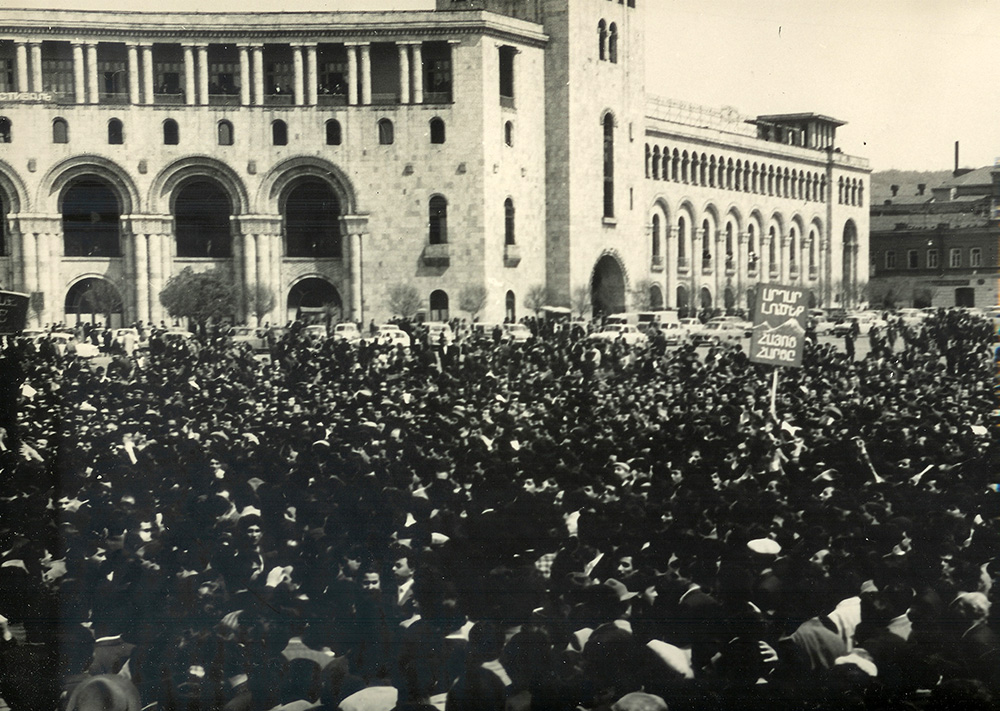
Lenin square protest of April 24. Yerevan, 1965, AGMI collection

Demonstrators of April 24 are reciting . Yerevan 1965, AGMI collection
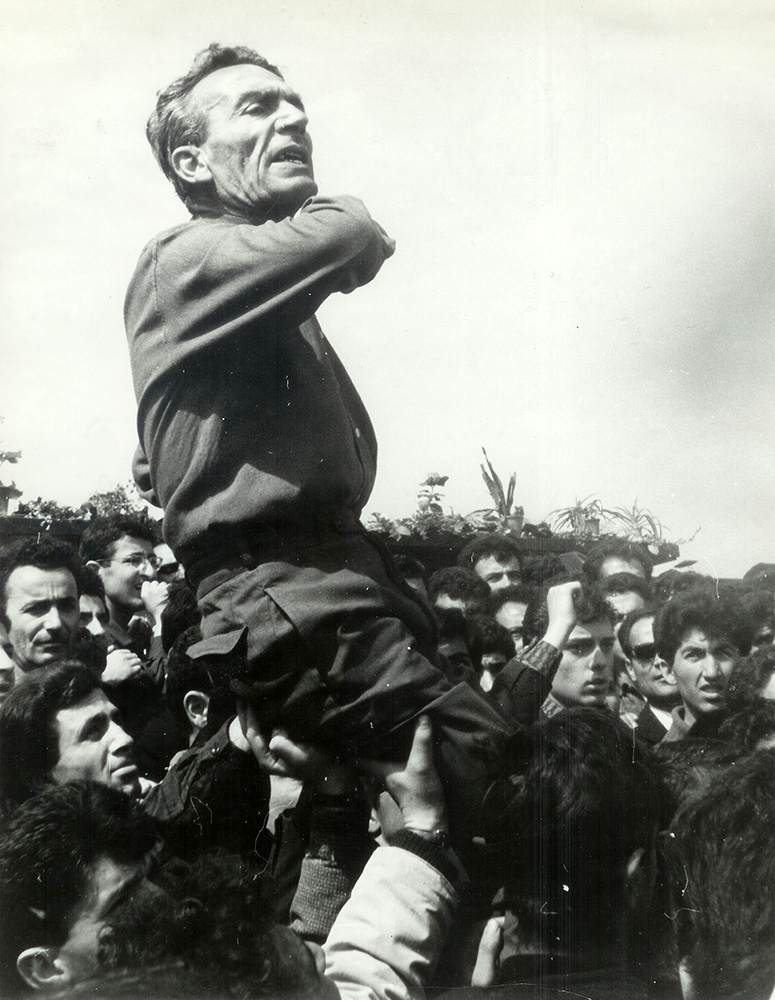
Preliminary sketch (architects A. Tarkhanyan, S. Kalashyan, H. Poghosyan), Yerevan, 1965

The model of the original version defined at the initial stage of the competition (architects A. Tarkhanyan, S. Kalashyan, H. Poghosyan, Sculptor, V. Khachatryan), Yerevan 1965
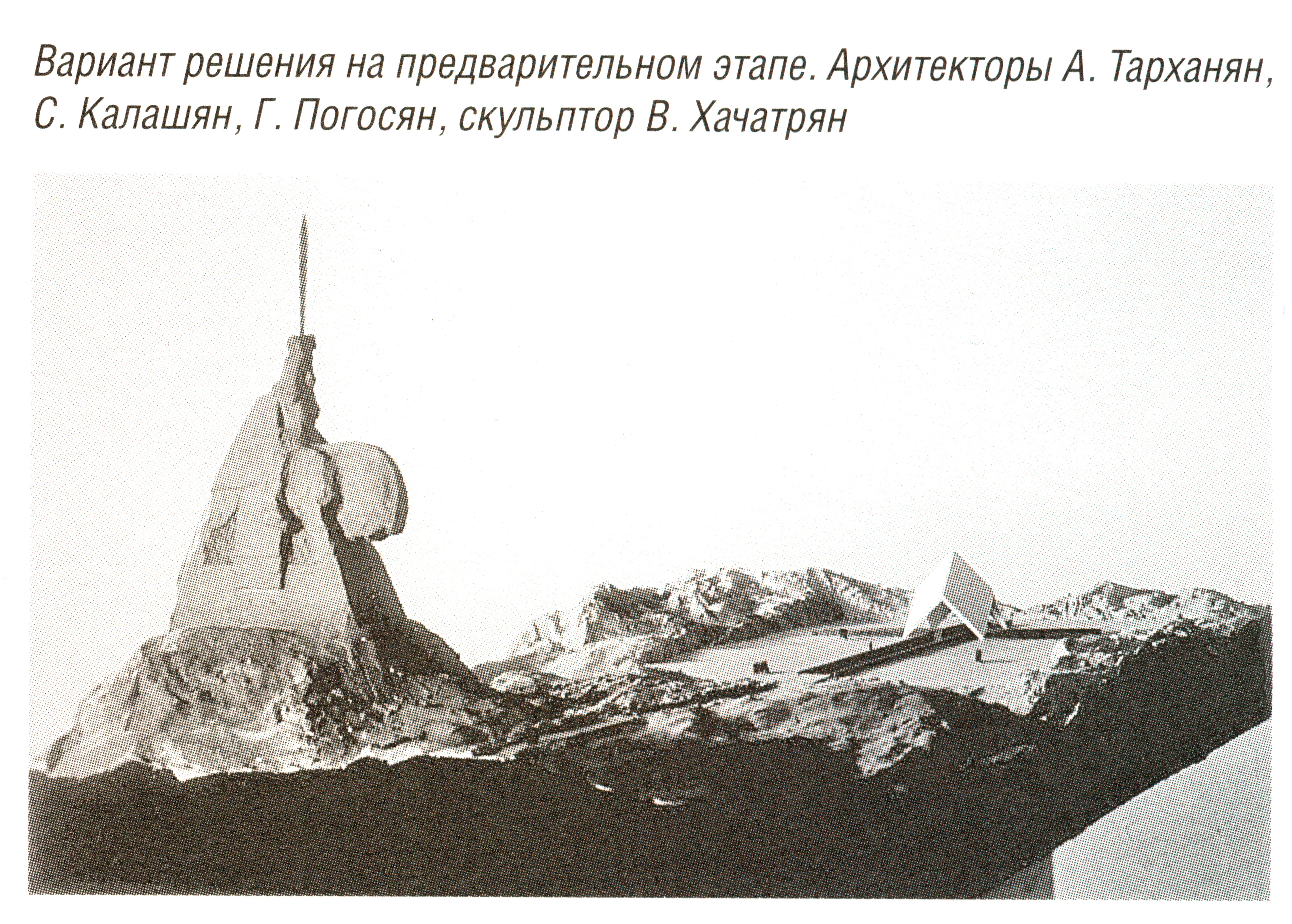
The competition version of the model (architects A. Tarkhanyan, S. Kalashyan, H. Poghosyan), Yerevan, 1965, AGMI collection.

Modified posture after competition, (architects A. Tarkhanyan, S. Kalashyan, H. Poghosyan), Yerevan, 1965, AGMI collection.
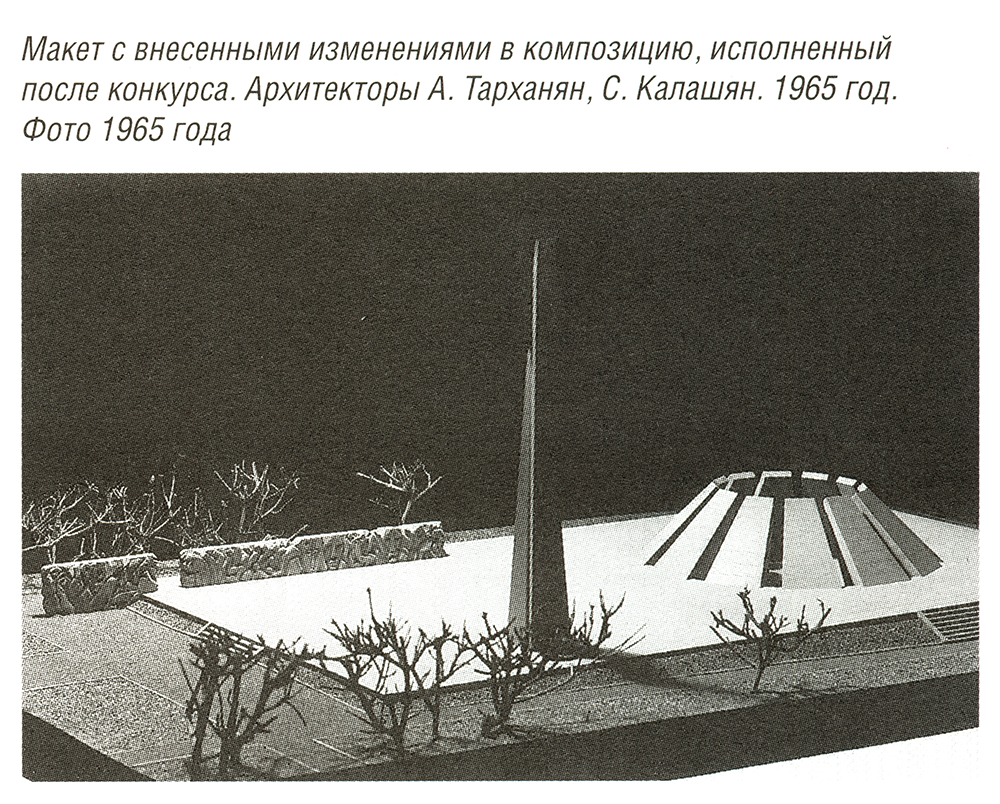
Monument proportional structure

Monument proportional structure
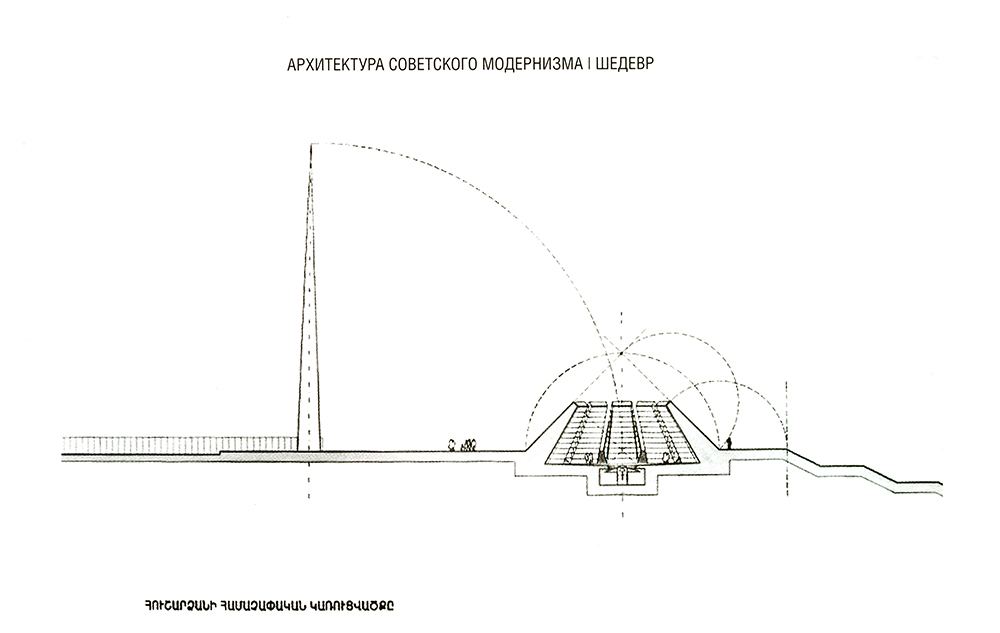
Monument proportional structure
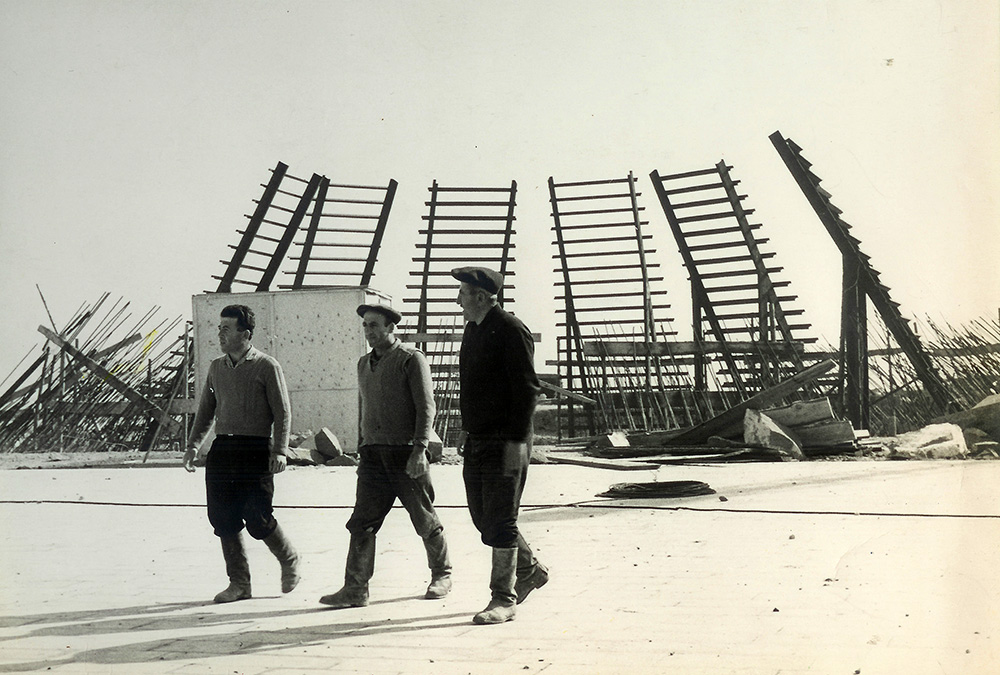
The builders who worked on the Monument, Yerevan 1965/1966, AGMI collection.

The builders who worked on the Monument, Yerevan 1965/1966, AGMI collection.

The builders who worked on the Monument, Yerevan 1965/1966, AGMI collection.

The builders who worked on the Monument, Yerevan 1965/1966, AGMI collection.

The builders who worked on the Monument, Yerevan 1965/1966, AGMI collection.
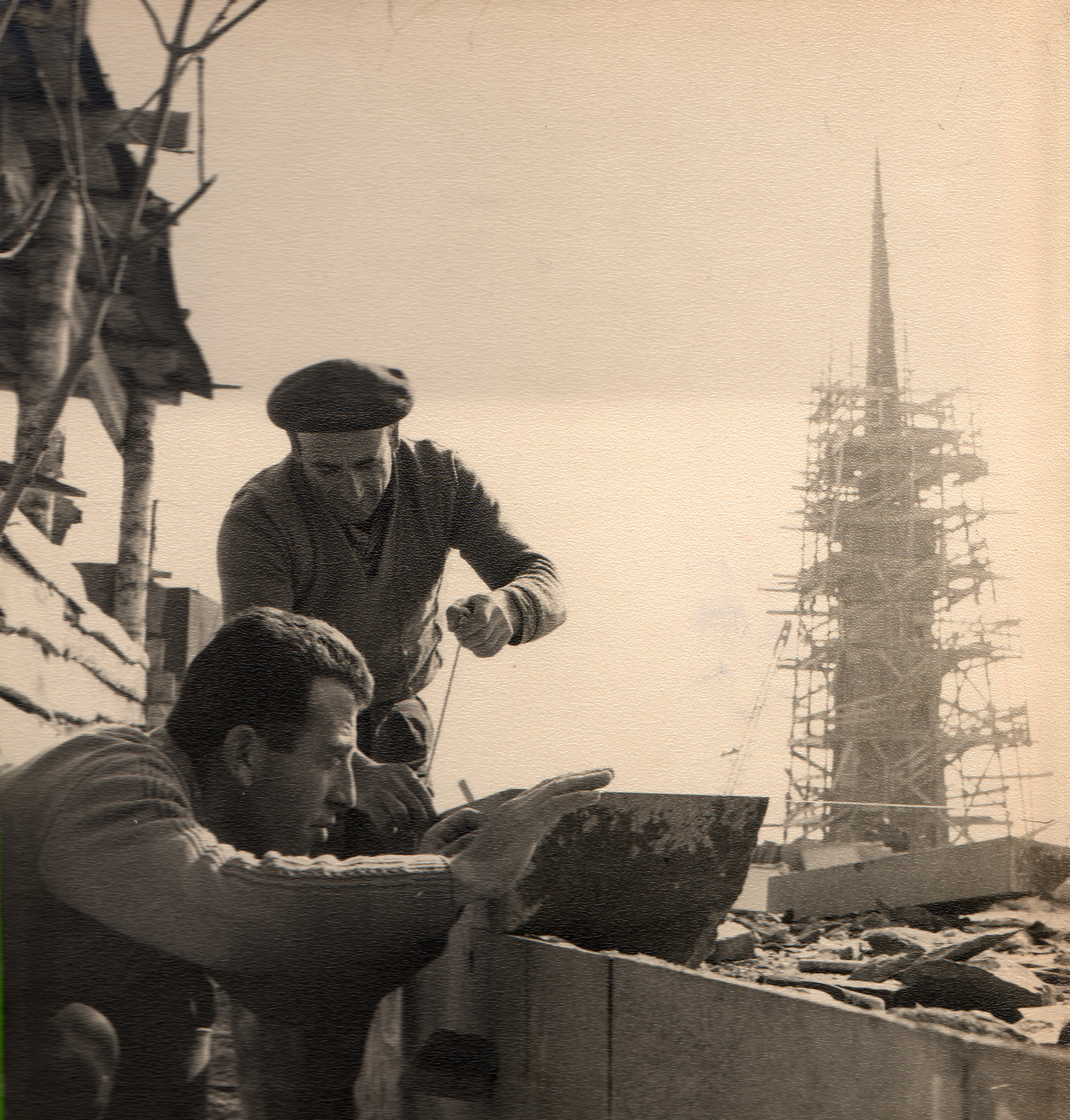
The builders who worked on the Monument, Yerevan 1965/1966, AGMI collection.
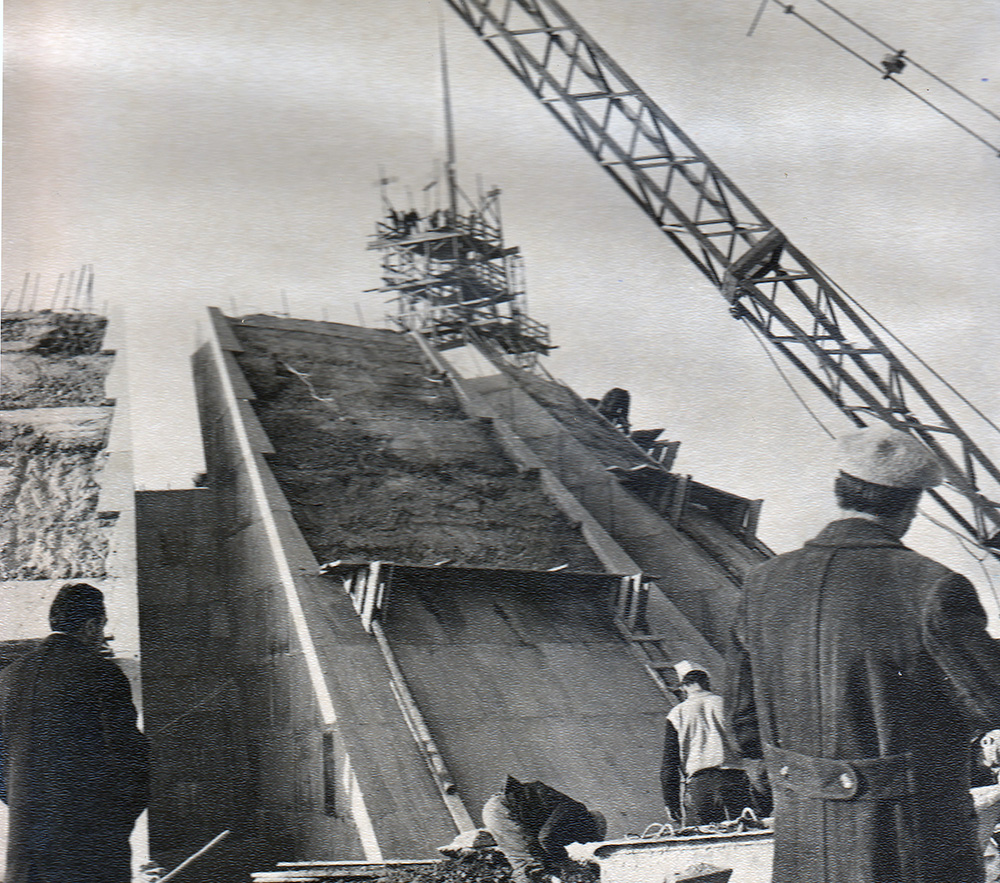
The construction process of the monument, Yerevan 1965/1966, AGMI collection.
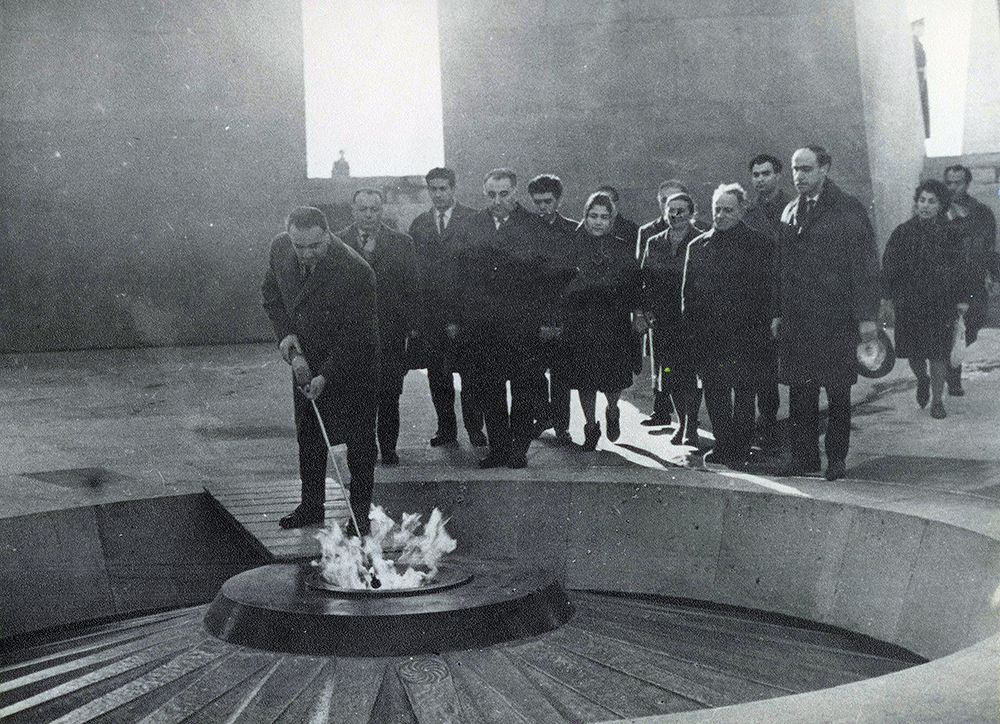
Official opening of Armenian Genocide Memorial Complex, on November 29, 1967, First Secretary of the Communist Party Central Committee Anton Qochinyan, with the torch from Yerevan Kirov Chemical Plant Furnace burns the eternal fire. Behind him ( from left to right) are standing First Deputy of the USSR Council of Ministers Suren Movsesyan, First Secretary of Yerevan Communist Party Committee Karen Demirchyan, Chairman of the Presidium of the Supreme Soviet of the USSR Nagush harutyunyan, famous poets Paruyr Sevak, Silva Kaputikyan and others.
AGMI collection.
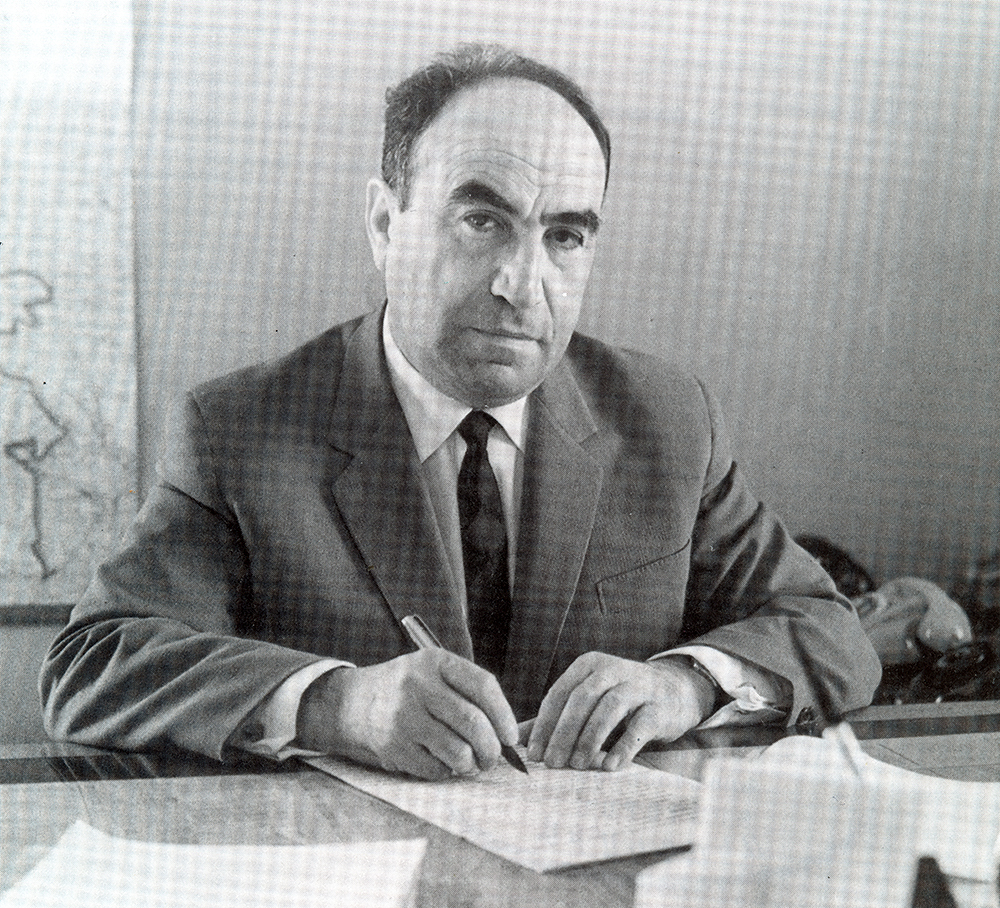
ՀԽՍՀ Կոմկուսի կենտկոմի առաջին քարտուղար Յա. Զարոբյանը իր աշխատասենյակում, Երևան, 1965 թ.
(Заробян Н. Я. Яков Заробян и его эпоха / Н. Я. Заробян, Ереван, 2008)
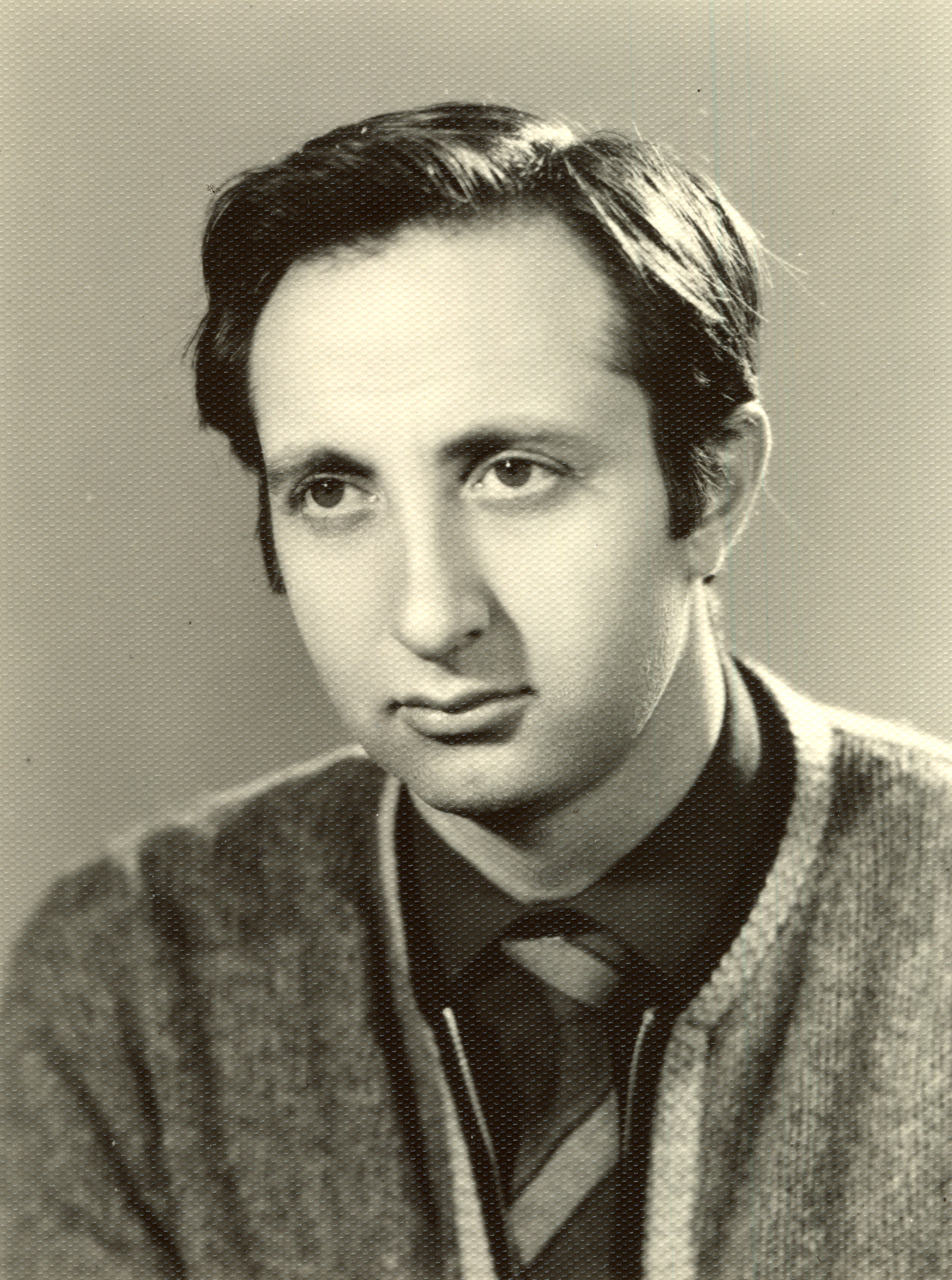
Arthur Tarkhanyan
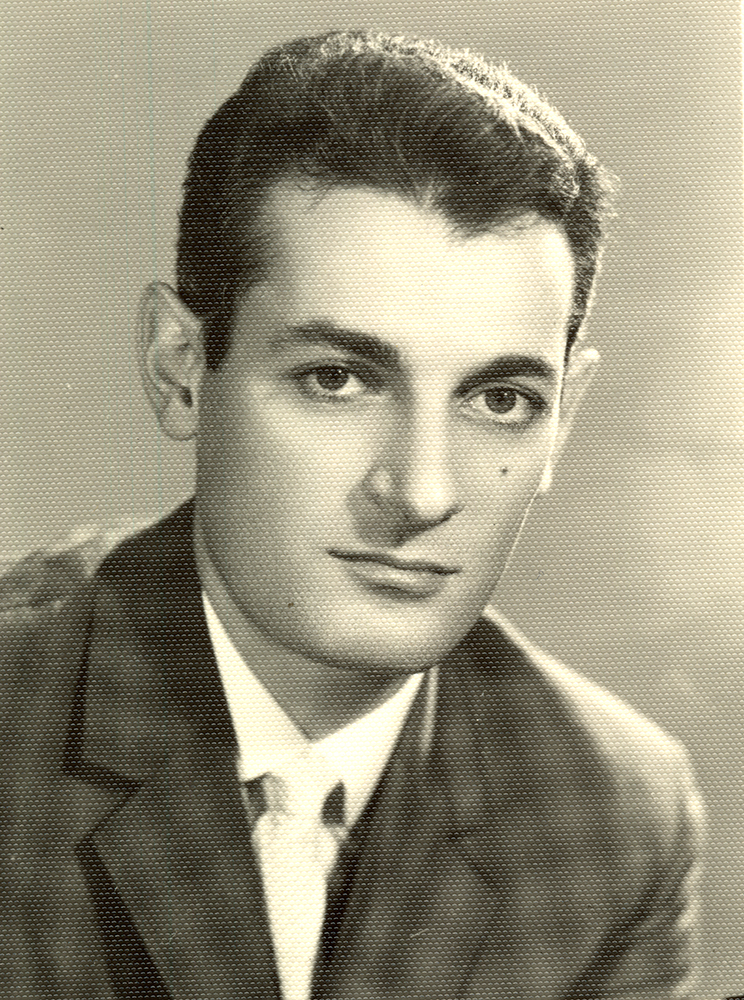
Sashur Qalashyan
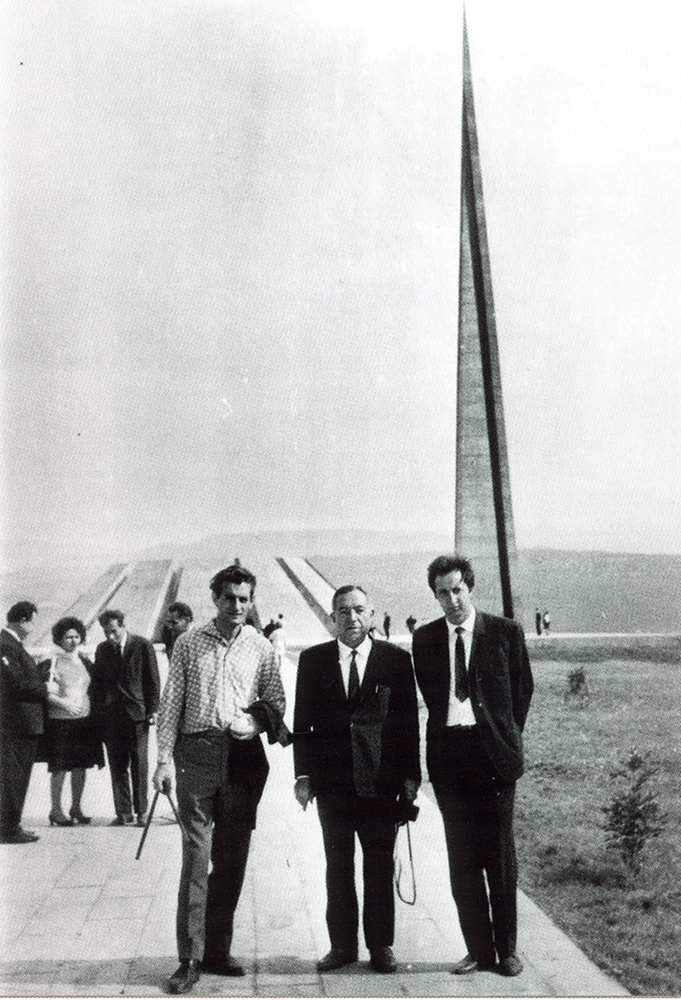
Arthur Tarkhanyan and Sashur Qalashyan with an Armenian from Diaspora, Yerevan 1968.
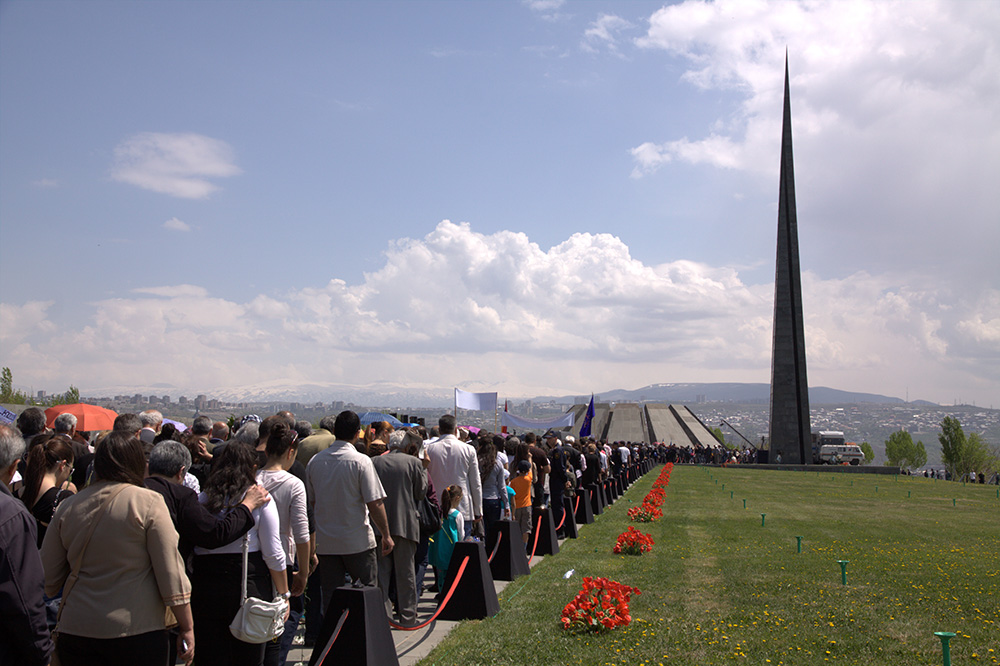
Commemoration day, April 24

Commemoration day, April 24
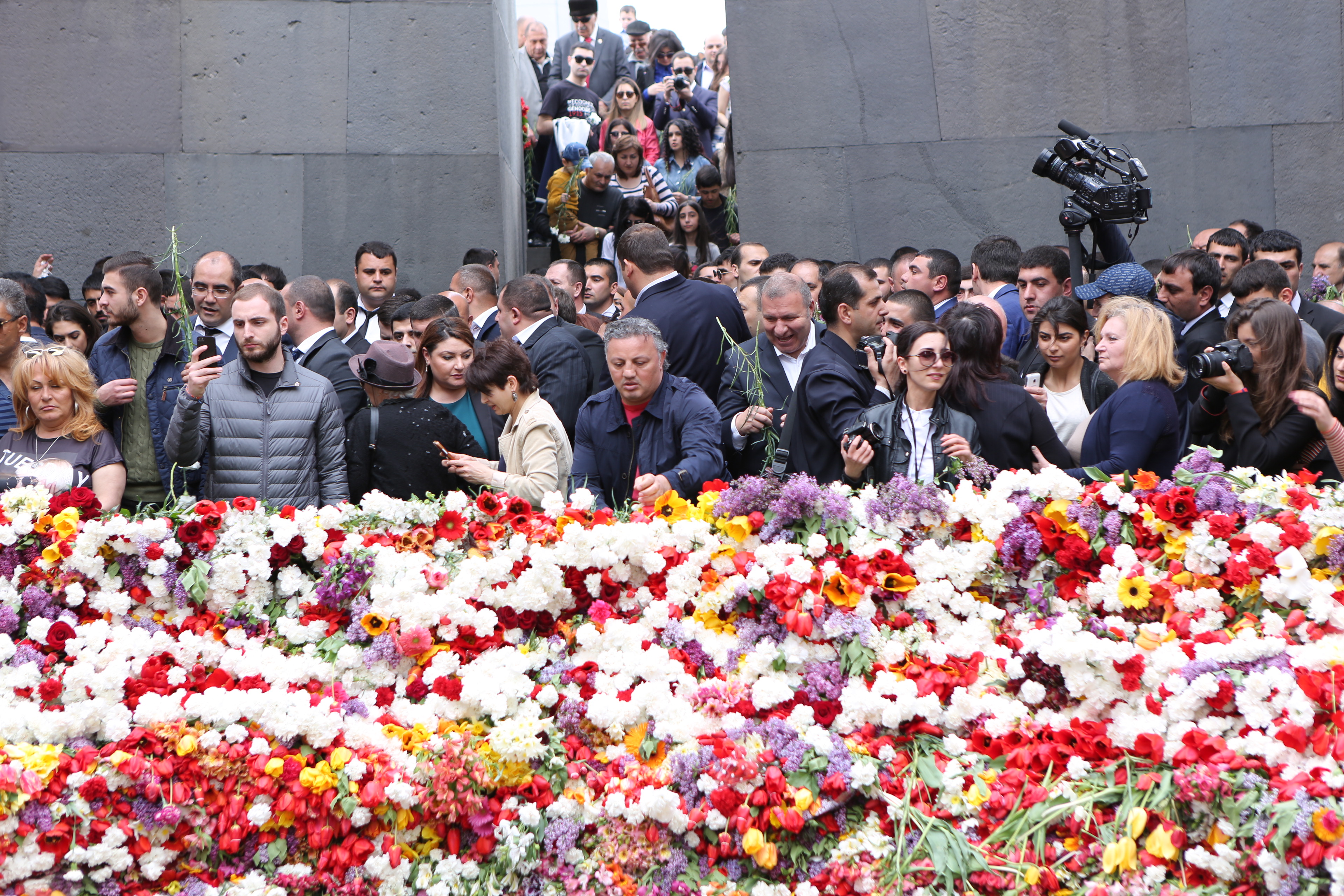
Commemoration day, April 24

Commemoration day, April 24





